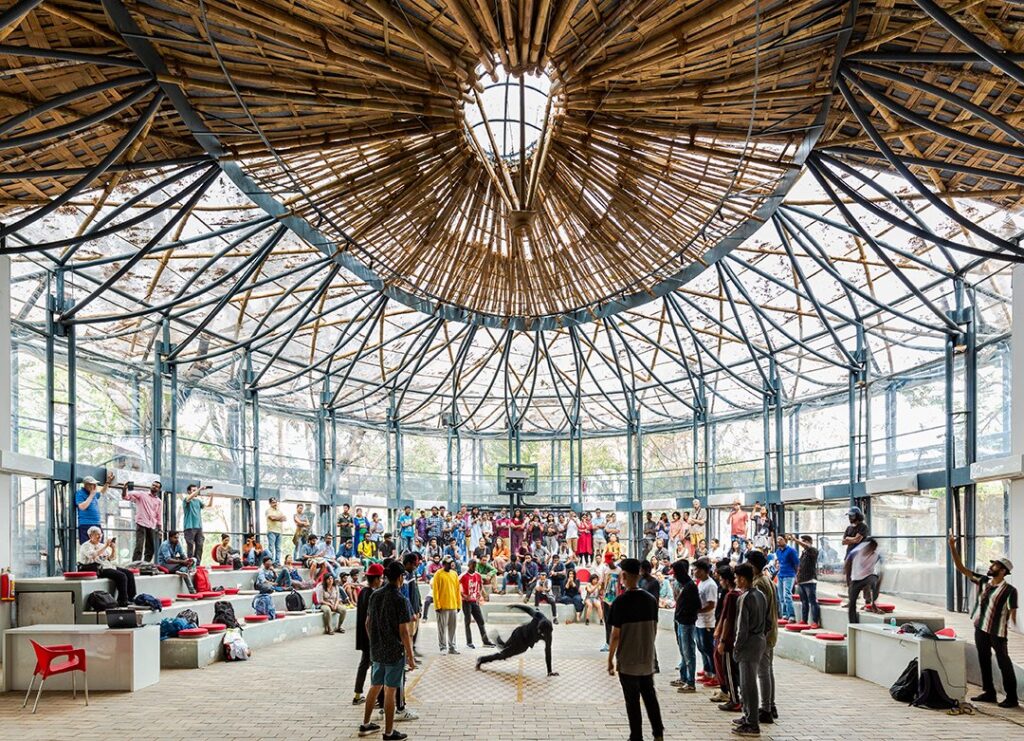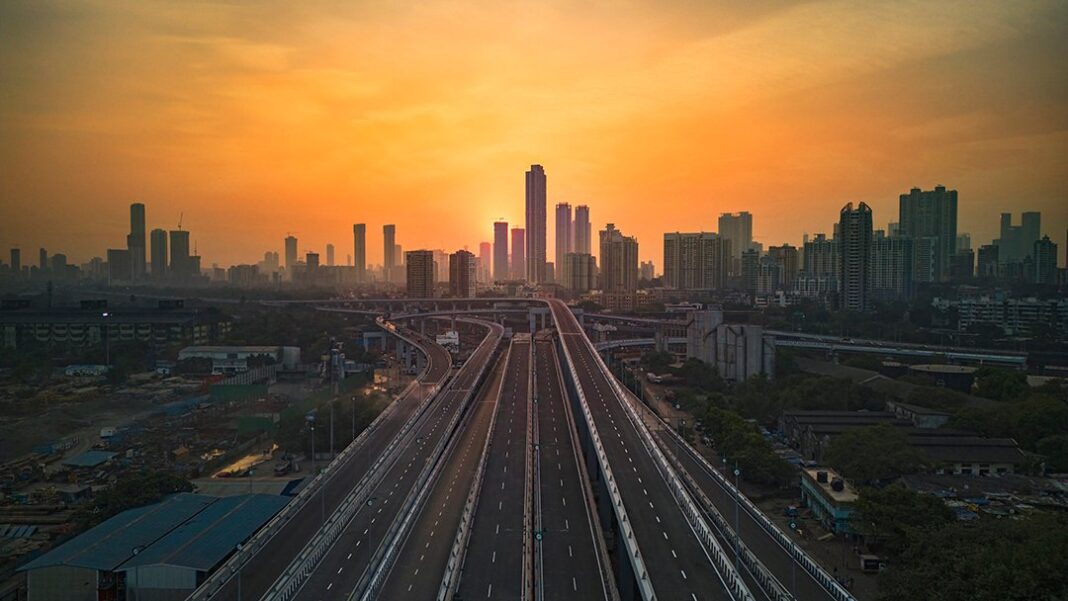In a captivating exploration of the world of architecture through the lens of Shruti Dimri, Principal at Anagram Architects, she delves into the origins of her architectural journey. From the intersections of creativity, attention to detail, and the art of crafting spaces that go beyond the conventional, Dimri shares her candid insights on navigating the challenges and rewards of architectural craftsmanship.
What initially inspired you to pursue a career in architecture, and are there specific individuals, experiences, or moments that influenced
this decision?
I don’t have a fantastical story. I come from a family where talking about aesthetics, art and culture, food, paintings, etc. was an everyday thing. There was an inclination towards arts in general, and design also. I remember this vividly, when I had to choose a path, everyone wanted to be an engineer, but I definitely did not want to do what everyone else was doing. From class nine, I did not think about anything else. Any decision I made thereafter was centred around my desire to be an architect. I also remember telling my relatives that I would design their houses one day.
How have these early inspirations shaped your perspective and approach to architecture throughout your career?
When you talk about aesthetics as a child and your parents also talk about it constantly, the most important value and way of thinking it instils is to not take anything as a rule. Question everything and do it for your joy. When you sit down to solve a problem, you have to first understand it well – is what has been posed to you the problem and is that the only thing you will solve? Sure, you can design a school with classrooms but are there other things you can do to increase the quality of the space even though it may not be required of you? I think that the flexibility to pay attention to the details while maintaining the big picture is an important quality.
How do you ensure that every project reflects your design philosophy, especially when it comes to attention to detail?
There is no linear process to it. You want to get to the end product and be sure that you have things detailed out and that the overall picture is together as well. As in a painting, I will go close, draw the details and step back to see where it falls in the larger context because it is easy to lose track of whether a certain detail is important or not. The zeal to detail should not bog you down. One way I keep track is by maintaining detailed presentations outlining the entire project. Also, have people around whom you can collaborate with.
With such a diverse portfolio, could you share a project, specifically in steel, that you found particularly challenging or rewarding?
I would like to mention the Koodaaram project for the Kochi-Muziris Biennale. The mandate was to build a structure where the performing arts can take place and after three months, it will be dismantled and cleared. It’s an interesting problem because you want for those three months to be weather-proof while being a large structure that can be easily dismantled. The ground also should not be affected much. Such profiles are very well-suited for using steel. We used hollow sections of MS. The roof is a combination of metal and bamboo. Instead of glass, we used acrylic sheets. It has also won a lot of recognitions.

What challenges have you encountered working with steel as a material?
We did a residential project in Delhi in steel and a farmhouse. While steel’s time advantage was key in the farmhouse project, erection was a challenge for the residence since it was a tiny space. What was an advantage in one project was a disadvantage in the other. We don’t have the skilled labour and have a shorter bank of contractors to choose from. In terms of cost as well, steel loses out. In a crematorium project, where the base will made of steel, we convinced the client to do something slightly different and go beyond the basic shed design. I don’t think I can convert a complete non-believer of design into a believer just by saying good design is better. There has to be some prior education and it is your job to identify such people. Sharing stats and examples definitely helps.
Your thoughts on parametric design? Any emerging technology that you are excited about?
Parametric design has been around for a long time. It can be considered halfway to Artificial Intelligence where you still have the parameters. Although, AI still has a long way to go – it is intelligent but it doesn’t know what to be intelligent about. We ask it to do something and it comes back with some bizarre options that are not practical. It is a learning process and we know that the more we do it, the better we’ll become at controlling the parameters.
How do you incorporate sustainable practices into your designs? With regards to steel, are there sustainable practices that you find noteworthy?
Unpopular opinion – Incorporating solar panels in the design is now a fad. The more you read about it, you realise it is not that sustainable. The overall carbon footprint is still more than conventional energy conservation methods. I find it interesting as an interim stage based on which something new can be done. I believe in the ‘reduce, reuse, and recycle’ principle. Build something that lasts decades if not a century. We are not in a sustainable profession; what we can do is minimise our impact on the environment. Being aware of the impact is going to be key. Steel is a great alternative, though it comes with its challenges. If all of the construction became metal, we would not have enough to build for everyone.







I like what you guys are up also. Such smart work and reporting! Keep up the superb works guys I have incorporated you guys to my blogroll. I think it’ll improve the value of my website 🙂
I love it when people come together and share opinions, great blog, keep it up.
I like what you guys are up too. Such intelligent work and reporting! Keep up the superb works guys I’ve incorporated you guys to my blogroll. I think it’ll improve the value of my site 🙂
I appreciate your piece of work, regards for all the great articles.
The next time I read a blog, I hope that it doesnt disappoint me as much as this one. I mean, I know it was my choice to read, but I actually thought youd have something interesting to say. All I hear is a bunch of whining about something that you could fix if you werent too busy looking for attention.
I really like your blog.. very nice colors & theme. Did you create this website yourself or did you hire someone to do it for you? Plz respond as I’m looking to create my own blog and would like to find out where u got this from. cheers
Thanks for the sensible critique. Me and my neighbor were just preparing to do some research about this. We got a grab a book from our local library but I think I learned more clear from this post. I am very glad to see such wonderful info being shared freely out there.
This is a topic close to my heart cheers, where are your contact details though?
The next time I read a blog, I hope that it doesnt disappoint me as much as this one. I mean, I know it was my choice to read, but I actually thought youd have something interesting to say. All I hear is a bunch of whining about something that you could fix if you werent too busy looking for attention.
Its like you read my mind! You appear to know a lot about this, like you wrote the book in it or something. I think that you can do with some pics to drive the message home a little bit, but instead of that, this is excellent blog. An excellent read. I will definitely be back.
Good day I am so glad I found your site, I really found you by accident, while I was looking on Aol for something else, Anyways I am here now and would just like to say thanks a lot for a fantastic post and a all round thrilling blog (I also love the theme/design), I don’t have time to browse it all at the minute but I have saved it and also included your RSS feeds, so when I have time I will be back to read a lot more, Please do keep up the fantastic work.
I would like to thank you for the efforts you have put in writing this web site. I am hoping the same high-grade site post from you in the upcoming also. Actually your creative writing abilities has inspired me to get my own web site now. Actually the blogging is spreading its wings rapidly. Your write up is a good example of it.
Hi I am so thrilled I found your web site, I really found you by mistake, while I was looking on Bing for something else, Anyways I am here now and would just like to say kudos for a marvelous post and a all round exciting blog (I also love the theme/design), I don’t have time to look over it all at the minute but I have bookmarked it and also added your RSS feeds, so when I have time I will be back to read a lot more, Please do keep up the superb job.
Hi my family member! I wish to say that this post is awesome, great written and come with approximately all vital infos. I would like to look extra posts like this.
Youre so cool! I dont suppose Ive learn anything like this before. So good to search out any individual with some original ideas on this subject. realy thanks for beginning this up. this website is something that is wanted on the internet, someone with a bit of originality. useful job for bringing something new to the internet!
You are my intake, I own few blogs and occasionally run out from post :). “Actions lie louder than words.” by Carolyn Wells.
Hello there! I know this is kinda off topic but I was wondering which blog platform are you using for this website? I’m getting sick and tired of WordPress because I’ve had problems with hackers and I’m looking at alternatives for another platform. I would be awesome if you could point me in the direction of a good platform.